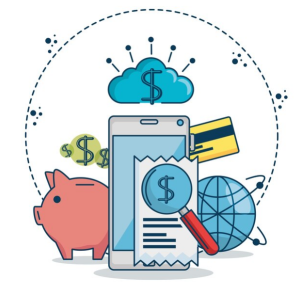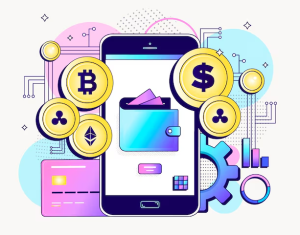In an increasingly digital world, the landscape of banking and financial transactions has undergone a profound transformation. Gone are the days of long queues at brick-and-mortar banks and cumbersome paperwork.
Anúncios
This article delves into the realm of digital banking in the United States, exploring the concept of digital accounts and how they streamline financial transactions for consumers.
The rise of digital banking

Digital banking, also known as online or internet banking, has witnessed exponential growth in recent years. The proliferation of smartphones, coupled with advances in technology and changing consumer preferences, has fueled this expansion.
Today, a significant portion of banking activities, ranging from fund transfers to bill payments, can be performed conveniently through digital channels.
Understanding digital accounts
At the heart of digital banking are digital accounts, which serve as virtual repositories for individuals’ funds. These accounts, offered by various financial institutions, enable users to conduct a wide array of transactions without the need for physical interaction. Unlike traditional bank accounts, digital accounts can be accessed and managed entirely online or through mobile applications.
Features and benefits of digital accounts
Digital accounts come with a host of features designed to simplify and enhance the banking experience for users. Some of the key benefits include:
- Convenience: Perhaps the most significant advantage of digital accounts is the convenience they offer. Users can perform transactions anytime, anywhere, eliminating the constraints imposed by traditional banking hours and locations.
- Accessibility: Digital accounts grant users access to their funds 24/7, empowering them to manage their finances on their terms. Whether it’s checking account balances, transferring funds, or paying bills, everything can be done with just a few taps on a smartphone or clicks on a computer.
- Cost savings: Digital banking often comes with lower fees and charges compared to traditional banks. With reduced overhead costs, financial institutions can pass on the savings to customers in the form of competitive interest rates and minimal account fees.
- Enhanced security: Despite initial apprehensions about security, digital banking platforms employ robust encryption and authentication measures to safeguard users’ sensitive information. Biometric authentication, two-factor authentication, and data encryption are just some of the security features employed to protect users from fraud and unauthorized access.
- Seamless integration: Digital accounts seamlessly integrate with other financial services and third-party applications, allowing users to aggregate their financial data and access a comprehensive overview of their finances in one place.
Popular digital banking providers in the USA
Several financial institutions in the United States offer digital banking services, each with its unique features and offerings. Some of the most popular digital banking providers include:
- Chime: Chime is a leading digital banking platform known for its fee-free approach and user-friendly interface. With features like early direct deposit, automatic savings, and no minimum balance requirements, Chime has gained popularity among millennials and Gen Z consumers.
- Ally bank: Ally Bank is renowned for its high-yield savings accounts, competitive interest rates, and no monthly maintenance fees. In addition to traditional banking services, Ally offers investment products, home loans, and auto financing, providing a comprehensive suite of financial solutions to its customers.
- Varo bank: Varo Bank distinguishes itself with its mobile-centric approach and innovative features such as Varo Advance, a cash advance service that helps users cover unexpected expenses between paychecks. Varo Bank also offers early direct deposit and no foreign transaction fees, making it an attractive option for frequent travelers.
- Simple: True to its name, Simple offers a straightforward and intuitive banking experience with features like goal-based budgeting, expense tracking, and built-in savings goals. Simple’s fee structure is transparent, with no overdraft fees or monthly maintenance fees, making it an appealing choice for those seeking simplicity and clarity in their finances.
- SoFi Money: SoFi Money combines banking and investing in a single platform, offering features like high-yield checking accounts, commission-free stock trading, and cryptocurrency trading. SoFi Money also provides personal loans, student loan refinancing, and mortgage loans, catering to the diverse financial needs of its users.
The future of digital banking
As technology continues to evolve, the future of digital banking holds exciting possibilities. Emerging trends such as artificial intelligence, machine learning, and blockchain technology are poised to further transform the banking landscape, enabling personalized experiences, faster transactions, and enhanced security.
In conclusion, digital banking has emerged as a game-changer in the realm of financial transactions, offering unparalleled convenience, accessibility, and security to users. As the world becomes increasingly interconnected and technology-driven, digital accounts will continue to play a central role in shaping the future of banking in the United States and beyond.






